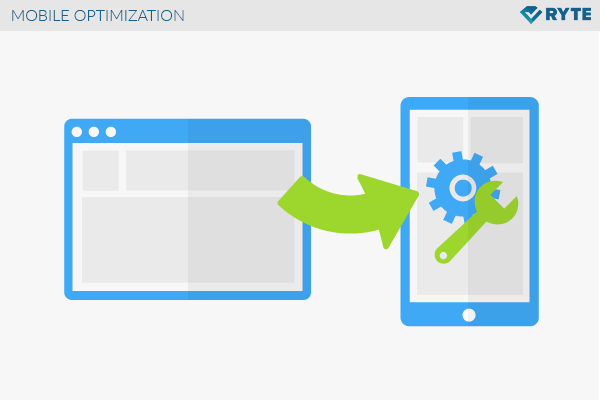Dominate Search Results Page with Next-Level Mobile Optimization Techniques
Dominate Search Results Page with Next-Level Mobile Optimization Techniques
Blog Article

The Ultimate Guide to Mobile Optimization: Methods for Enhancing Website Efficiency on Smartphones and Tablets
The approaches for enhancing website performance on mobile systems go past simple adjustment; they incorporate an extensive method that includes responsive style, speed optimization, material techniques, and individual experience improvements. By delving into the complexities of mobile optimization, organizations can not just meet customer expectations but additionally stay ahead in a competitive electronic landscape.
Relevance of Mobile Optimization
Mobile optimization plays a crucial duty in enhancing customer experience and driving conversion rates in the ever-evolving electronic landscape. With the boosting use of mobile phones and tablet computers for browsing the net, ensuring that websites are optimized for mobile gadgets has actually come to be important for organizations - Mobile Optimization. A mobile-optimized website not just adapts perfectly to various screen sizes yet also tons promptly, giving individuals with a smooth and delightful surfing experience
In today's busy globe, individuals anticipate instantaneous accessibility to info on the go. A web site that is not enhanced for mobile devices threats shedding possible consumers because of slow down filling times or a poor individual interface. By investing in mobile optimization, companies can cater to the needs of their mobile target market, bring about higher involvement and raised conversions.
Moreover, internet search engine like Google prioritize mobile-friendly websites in their rankings, making mobile optimization crucial for boosting presence and attracting natural traffic. Mobile Optimization. On the whole, the importance of mobile optimization can not be overstated, as it straight influences customer satisfaction, conversion rates, and total business success in the electronic realm
Responsive Layout Techniques
Executing responsive style techniques ensures that internet sites dynamically change their format and web content based upon the user's device screen dimension, supplying a constant individual experience throughout numerous platforms. Among one of the most usual methods used in receptive layout is developing fluid grids that allow web content to resize proportionally to the screen size. This makes sure that aspects on the page keep their relative spacing and arrangement, enhancing the viewing experience for individuals on various tools.
In addition, using flexible photos that can scale with the size of the viewport helps prevent pictures from being cropped or misshaped on smaller displays. CSS media questions play a vital role in responsive style by permitting designers to apply specific styles based on the device characteristics such as display width, height, and orientation. By leveraging media questions, web sites can adjust their layout and style to suit smart devices, tablet computers, and desktop computer screens flawlessly.
Including responsive style strategies not just boosts individual experience but additionally adds to enhanced online search engine positions, as internet search engine like Google focus on mobile-friendly internet sites in their mobile search outcomes. By accepting responsive layout, internet sites can satisfy the diverse needs of individuals accessing web content on a selection of tools, inevitably driving engagement and conversions.
Speed and Performance Optimization

One trick strategy is enhancing pictures and multimedia web content to decrease file sizes without jeopardizing high quality. Compressing photos, leveraging modern-day image styles like WebP, and lazy filling offscreen photos are reliable techniques to accelerate tons times (Mobile Optimization). Additionally, minimizing HTTP requests, leveraging browser caching, and reducing web server action times are crucial steps in boosting efficiency.
Applying a web content distribution network (CDN) can also considerably enhance website speed index by dispersing content across numerous servers internationally, reducing latency for users accessing the site from different places. Prioritizing crucial above-the-fold material and postponing non-essential manuscripts can even more enhance viewed efficiency. By concentrating on rate and performance optimization, sites can deliver a smooth and gratifying customer experience on smart phones.
Mobile-Friendly Content Techniques
Mobile-friendly web content methods include tailoring the presentation of information to fit the smaller displays and on-the-go nature of smart device and tablet go to these guys customers. In addition, breaking up web content into shorter paragraphs and utilizing bullet points can assist boost readability and make it simpler for customers to take in details rapidly.
Integrating interesting visuals, such as pictures and videos maximized for mobile viewing, can also enhance the general customer experience. These visuals should matter, high-grade, and load quickly to stop customers from losing passion. Incorporating interactive aspects like quizzes, polls, or studies can improve customer interaction and encourage active participation.
User Experience Enhancements
Building on the structure of mobile-friendly web content techniques, enhancing individual experience requires enhancing every touchpoint to make sure seamless communication and complete satisfaction for mobile users. One crucial facet of enhancing customer experience on mobile phones is guaranteeing quick loading times. Users anticipate web sites to fill swiftly on their mobile phones and tablets, and any type of hold-ups can result in disappointment and boosted bounce rates. Implementing receptive design is another crucial consider improving user experience. Receptive design guarantees that internet sites adjust to different screen sizes and resolutions, offering a regular and easy to use experience across various tools.
Enhancing forms for mobile users by decreasing the number of areas and using auto-fill functions can likewise boost the total user experience. By focusing on these individual experience enhancements, websites can properly involve and preserve mobile visitors.
Conclusion
Finally, mobile optimization is important for enhancing site efficiency on smart devices and tablets. By implementing receptive style methods, enhancing speed and efficiency, producing mobile-friendly content, and improving customer experience, businesses can effectively get to and involve with their mobile target market. It is crucial for websites to sites adapt to the boosting mobile usage fads in order to stay competitive in the electronic landscape.
Report this page